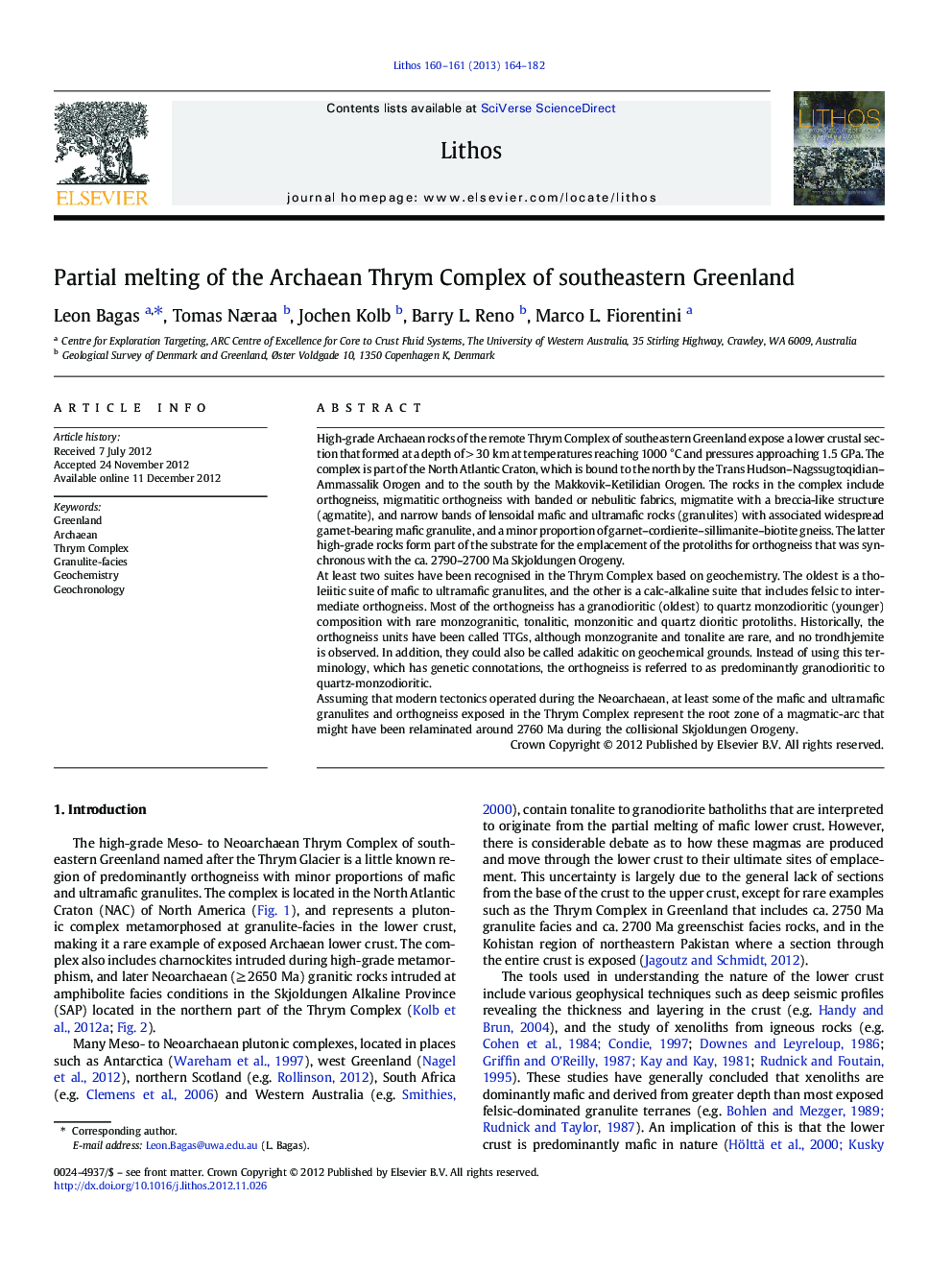| کد مقاله | کد نشریه | سال انتشار | مقاله انگلیسی | نسخه تمام متن |
|---|---|---|---|---|
| 4716331 | 1638696 | 2013 | 19 صفحه PDF | دانلود رایگان |

High-grade Archaean rocks of the remote Thrym Complex of southeastern Greenland expose a lower crustal section that formed at a depth of > 30 km at temperatures reaching 1000 °C and pressures approaching 1.5 GPa. The complex is part of the North Atlantic Craton, which is bound to the north by the Trans Hudson–Nagssugtoqidian–Ammassalik Orogen and to the south by the Makkovik–Ketilidian Orogen. The rocks in the complex include orthogneiss, migmatitic orthogneiss with banded or nebulitic fabrics, migmatite with a breccia-like structure (agmatite), and narrow bands of lensoidal mafic and ultramafic rocks (granulites) with associated widespread garnet-bearing mafic granulite, and a minor proportion of garnet–cordierite–sillimanite–biotite gneiss. The latter high-grade rocks form part of the substrate for the emplacement of the protoliths for orthogneiss that was synchronous with the ca. 2790–2700 Ma Skjoldungen Orogeny.At least two suites have been recognised in the Thrym Complex based on geochemistry. The oldest is a tholeiitic suite of mafic to ultramafic granulites, and the other is a calc-alkaline suite that includes felsic to intermediate orthogneiss. Most of the orthogneiss has a granodioritic (oldest) to quartz monzodioritic (younger) composition with rare monzogranitic, tonalitic, monzonitic and quartz dioritic protoliths. Historically, the orthogneiss units have been called TTGs, although monzogranite and tonalite are rare, and no trondhjemite is observed. In addition, they could also be called adakitic on geochemical grounds. Instead of using this terminology, which has genetic connotations, the orthogneiss is referred to as predominantly granodioritic to quartz-monzodioritic.Assuming that modern tectonics operated during the Neoarchaean, at least some of the mafic and ultramafic granulites and orthogneiss exposed in the Thrym Complex represent the root zone of a magmatic-arc that might have been relaminated around 2760 Ma during the collisional Skjoldungen Orogeny.
Figure optionsDownload as PowerPoint slideHighlights
► The high-grade rocks of the Archaean Thrym Complex are located in southeastern Greenland in the North Atlantic Craton.
► The complex formed at a depth of >30 km at temperatures reaching 1000°C and pressures approaching 1.5 GPa.
► Assuming that modern tectonics operated during the Neoarchaean, the complex represents the root zone of a magmatic-arc.
► This might have involved relamination around 2760 Ma during the collisional Skjoldungen Orogeny.
Journal: Lithos - Volumes 160–161, February 2013, Pages 164–182